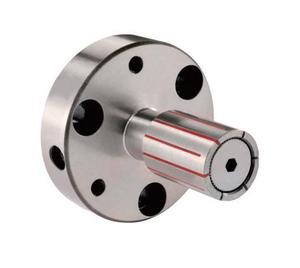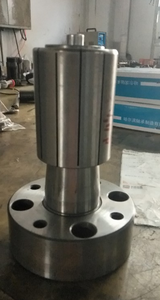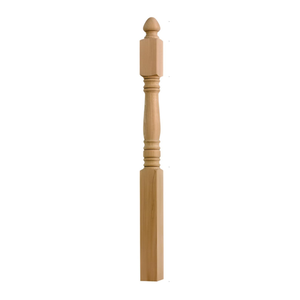
All categories
Featured selections
Trade Assurance
Buyer Central
Help Center
Get the app
Become a supplier

(378 products available)






















Expanding mandrels are used in various applications within the machinery industry, such as providing firm and non-marring clamping for tubular and other workpieces during machining operations. Below are some common types of expanding mandrels.
Pneumatic Expanding Mandrel
Mandrels with either tapered or cylindrical collars are commonly used to grip parts of different shapes and sizes. The gripping mechanism is based on pneumatic pressure, which expands or contracts the mandrel to hold or release the workpiece, respectively. They are particularly useful for holding workpieces with fewer clearances or tighter tolerances.
Hydraulic Expanding Mandrel:
They are also known as hydraulic squeezers or bushings. Hydraulic mandrels work on the same principle as pneumatic mandrels, utilizing hydraulic pressure to expand or contract the mandrel for workpiece holding or releasing. They offer higher holding forces than the latter and are suitable for heavy-duty machining operations.
Tapered Expanding Mandrel
Tapered expanding mandrels utilize a tapered shape to create a friction force to hold the workpiece when they are tightened in a sleeve or collar. They are versatile and commonly used in machining operations where a non-marring grip is essential.
Cylindrical Expanding Mandrel
Also known as air-expanding, cylindrical expanding mandrels have a pneumatically driven expanding element. This type of mandrel has a simple design and works consistently as a good clamp. They are ideal choices for light-duty machining such as drilling, reaming, taping, milling, and boring.
Swivel Expanding Mandrel
Swivel mandrels have jaws that are not only able to grip workpieces firmly but also change the positioning of irregularly-shaped workpieces during machining operations. Additionally, the jaw swing out of the way allow for easier loading and unloading of workpieces.
Expanding mandrel's key specifications are as follows.
Material
Hardened steel expanding mandrels are common. The expanding mandrel steel material can ensure sufficient clamping force when dealing with heavy workpieces. Other metal materials include aluminum and titanium, which have lighter weights but still offer considerable strength.
Max Diameter
This is the maximum size to which the mandrel can expand. The actual size may differ according to the design. For example, the expanding mandrels for the lathe can expand more than those for the drill.
Length
This is the overall length of the mandrel. A longer mandrel can handle a larger workpiece. However, it may not be suitable for some machines with limited space.
Taper
Some mandrels have a tapered shape. It can provide a tighter grip on uneven surfaces. The taper angle may vary depending on the specific application.
Proper maintenance of expanding mandrels can prolong their lifespan and ensure they work.
Cleaning:
Cleaning the mandrel regularly is an essential first step. Use a soft brush to remove dirt and debris from the surface. Rinse it with water and dry it with a clean towel. Cleaning can prevent corrosion and maintain good clamping strength.
Lubrication:
Regular lubrication helps the mandrel expand and contract smoothly. Apply proper grease or lubricant to the sliding parts. Remove the excess lubricant after applying it to avoid dirt accumulation during use.
Inspection:
Users should conduct routine inspections to identify potential problems early. Check whether the expanding mandrel has cracks, deformations, or abnormal clearances. Correct any issues found during the inspection in a timely manner to prevent further damage to the workpiece and equipment.
Expanding mandrels are useful in many areas because they are good at holding or expanding pipes and rolls. Here are some common ways expanding mandrels are used.
Several factors need consideration when choosing an expanding mandrel for businesses or customers' needs. At first, the type of material needs to be expanded and the sizes must be considered, including diameter and length. The pressure and force required to expand the mandrel for the particular application is another important aspect to consider. Air-powered expanding mandrels are mainly used in high-speed production environments, while hydraulic ones are preferred when high grip strength is needed.
Inspection and quality control are essential parts of expanding mandrels. One must check for any wear and tear that could affect the quality of the product before using the mandrel. This includes, but is not limited to, cracks, leaks, and loose parts. Always follow the manufacturer's instructions for handling and storing the expanding mandrel.
Winding mandrels can be used for products such like copper, aluminum, or steel pipelines. In order to get pipelines expanding tips, one need to consider looking for more specific kinds of mandrel on specialized sites.
Q1: Which key factors determine the choice of an expanding mandrel for a specific application?
A1: The type of material to be handled, the specific machining or processing operation, the diameter range, whether pneumatic expansion is feasible, and the desired level of precision and control all influence the choice of expanding mandrel.
Q2: What are the power source requirements for using an expanding mandrel?
A2: Expanding mandrels often require compressed air or electricity to function, depending their design on pneumatic or electric motor-driven actuation. Therefore, ensuring the availability of the appropriate power source and considering any necessary pressure or voltage requirements is essential.
Q3: Can an expanding mandrel handle multiple workpiece materials?
A3: While many expanding mandrels are designed for versatility, accommodating various workpiece materials like metal, plastic, and composites, the specific expanding mandrel selected will determine this.
Q4: What's the maximum load capacity of expanding mandrels?
A4: Expanding mandrels are available in various models with varying load limits. These generally range from light to heavy loads. Therefore, a specific expanding mandrel should be chosen that corresponds to the load capacity requirements of the particular application.